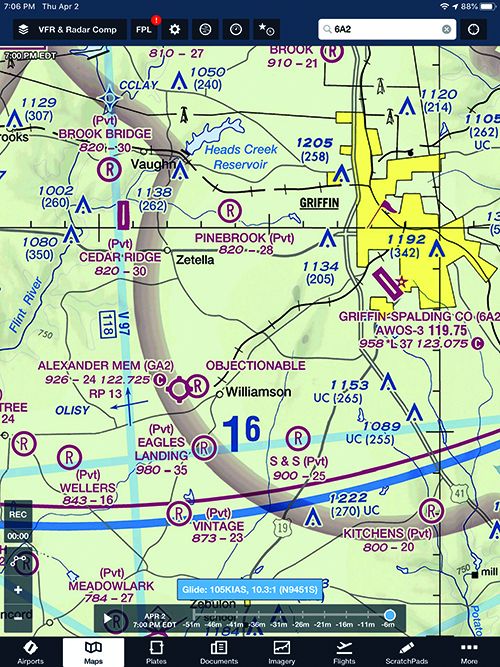
There’s a time-worn technique for flying IFR into an airport that is not served by an instrument approach. Fly the approach into a nearby airport and, when you break out, cancel IFR and fly visually to your planned destination. Although this may seem to be an invitation for illegal scud-running (and I’m certain many have done just that), it can be legal and safe as long as you plan for the transition and maintain VFR for the transitory flight. Here’s how:
- Before taking off, use the sectional chart to locate the maximum elevation figure (MEF) in the quadrant. Remember that MEF is the height of the highest terrain or obstacle in that quadrant on the sectional chart, adding 100 feet, and rounding up to the next 100-foot level. This is not the lowest safe altitude in that quadrant; it’s the height to which you should add 500 to 1000 feet to meet FAR 91.119 Minimum Safe Altitudes.
- Using the sectional, locate any obstacles that are between the airport with the approach and your planned destination.
- Ensure you comply with any airspace requirements, for example, Class B and C rules.
Using the information gained above, determine the precise route and minimum altitude you’ll fly between the airports. Compare that altitude to the reported ceiling and visibility at the airport at which you’ll fly the approach. If you’ll be in Class E airspace, your altitude between the airports must be at least 500 feet below the cloud bases and visibility must be at least three miles. If in Class G, you can accept one mile and clear of clouds. Then:

- Determine the altitude on the approach at which you will be in legal visual conditions and can cancel IFR.
- Determine how you will cancel IFR in the air before transiting to the other airport.
- Prior to beginning the approach:
- Double-check that you’ll have the visibility and ceiling you need to execute your plan.
- Review the routing and your navigation for the transition to the VFR airport.
- Review when and how you’ll cancel IFR and proceed visually.
- If the approach you’re flying is to a Class D airport, tell controllers your plan ahead of time.
- Manage the risk.
I would not fly more than about 10 or 15 miles using this technique. Also, I would accept a low (but at least marginal VFR) ceiling with excellent visibility, or MVFR visibility but no ceiling. But not both.
Often, as I did at Griffin, it’s better to land out of the approach, then mentally prepare yourself for a MVFR hop to the other airport.



